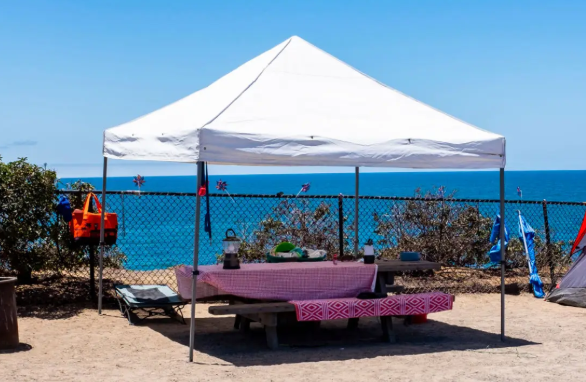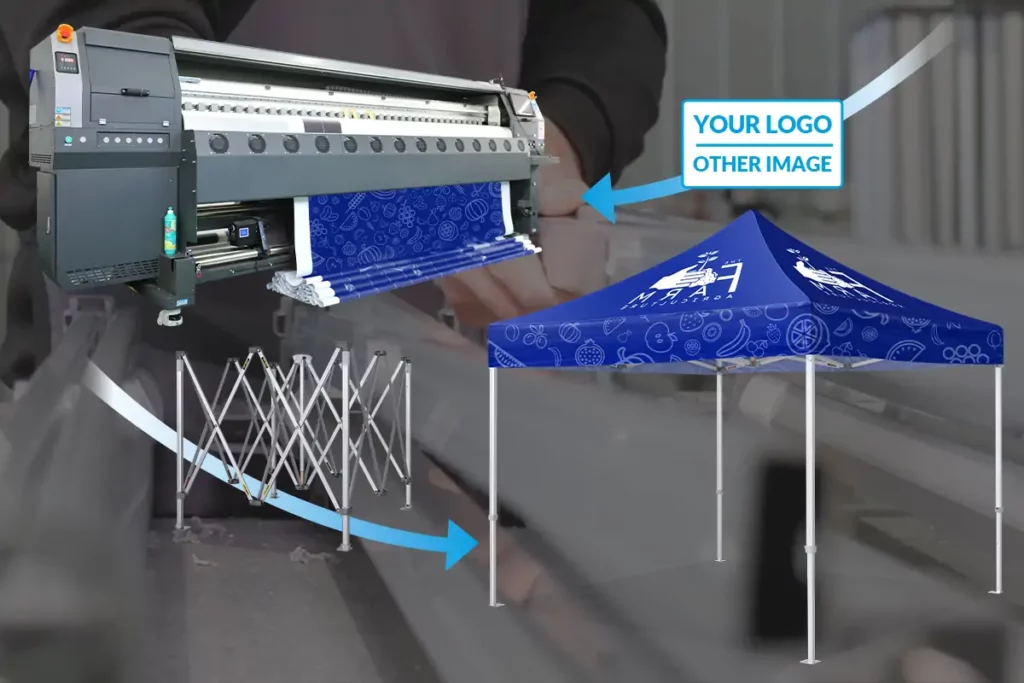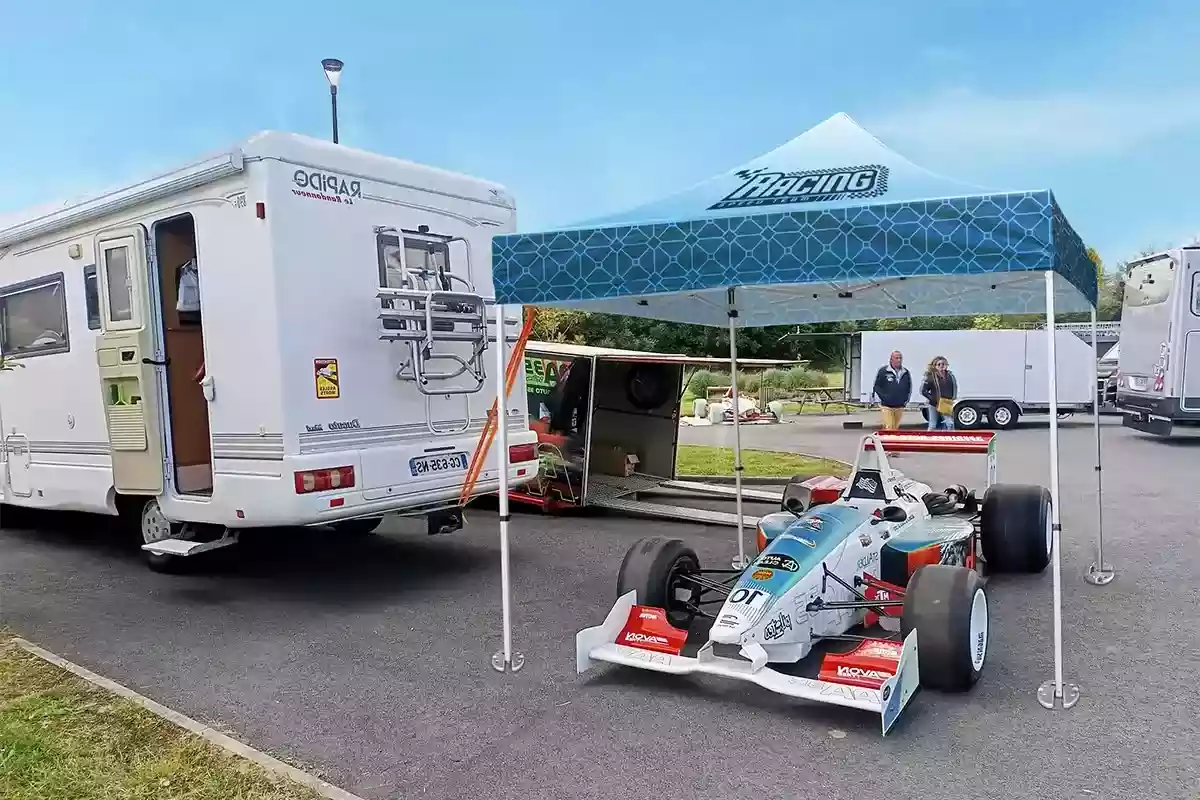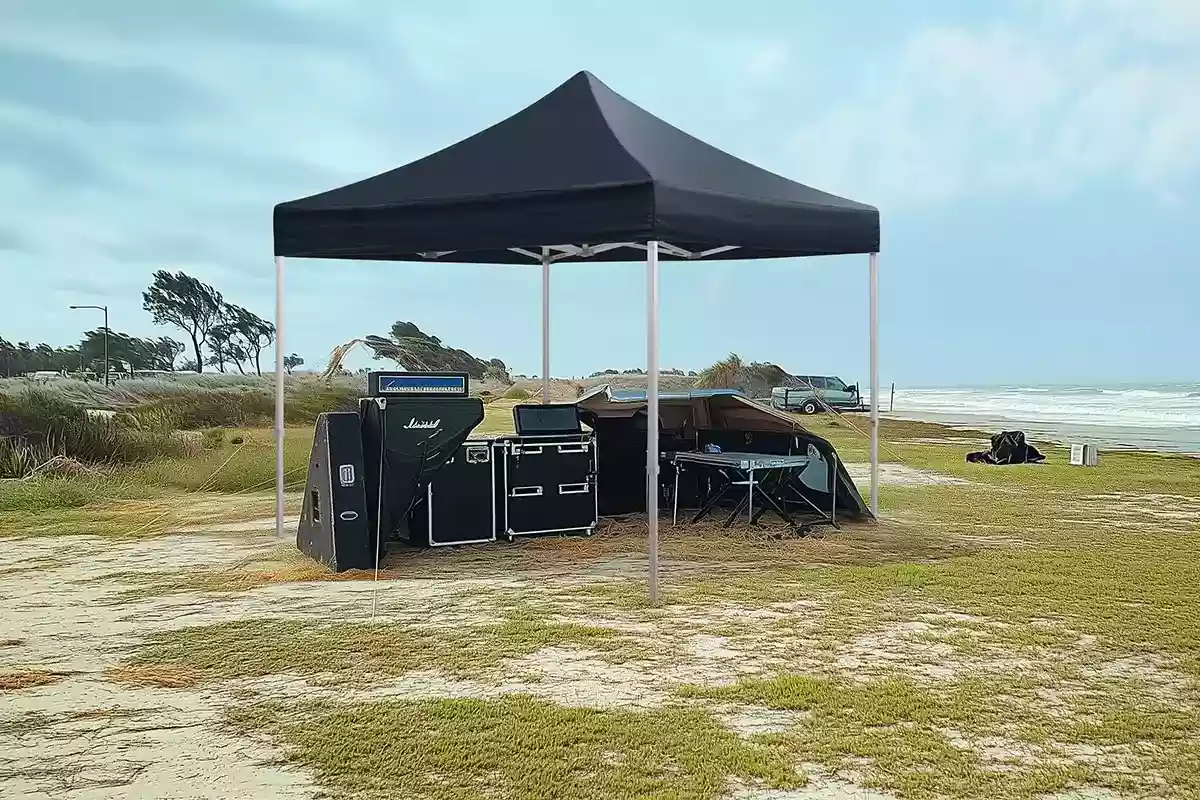
Never underestimate the effect of wind on your pop-up tent. Unpredictable winds can easily damage or blow away a tent that isn’t designed to handle them.
Many people tend to overlook the wind rating when buying a tent. This rating is essential in determining how well your tent will withstand different wind conditions, ensuring a safe and stress-free outdoor experience.
In this blog, we will explain how the pop up tent wind rating affects your tent, and how to secure it properly to keep it stable in windy conditions. Let’s dive into what you need to know before your next event.
How Different Wind Speeds Affect Pop-Up Tents
From a gentle breeze to a fierce gust, each wind speed poses different risks to the tent’s stability. We classify wind into four levels: light, moderate, strong, and severe, based on speed. Understanding how each wind strength affects your canopy will help you take the right precautions to keep it secure.
- Light Winds (up to 20 mph): These winds won’t put too much pressure on the frame or fabric. Tents can remain stable or experience minimal movement in the light wind, even if they are not anchored.
- Moderate Winds (20-30 mph): The winds may cause noticeable swaying or movement, especially if the tent isn’t properly anchored. Tents with a lower windproof rating are more vulnerable at this wind speed. In this case, you’d better use ropes or weights to secure the tent.
- Strong Winds (30-45 mph): At this wind speed, your pop-up tent will face significant pressure. It may begin to sway, lean, or even lift if it’s not properly secured. In addition to anchoring your tent, a heavy duty wind-resistant canopy is recommended, as it is specifically designed to withstand higher wind speeds and provide greater stability.
- Severe Winds (50+ mph): When wind speeds exceed 50 mph, your pop-up tent will be at high risk of being blown over or damaged. While some heavy duty canopies can withstand these winds, you’d better take down your tent for safety. If it must remain up, use tent stakes and weights to secure it, and remove sidewalls(if any) to reduce the surface area exposed to the wind.
How to Secure a Pop-Up Tent in Windy Conditions
In windy conditions, properly securing your pop-up tent is essential to prevent damage and ensure stability. So, how to secure a canopy in the wind? Here are two effective ways to stabilize your tent.
Anchoring the Canopy
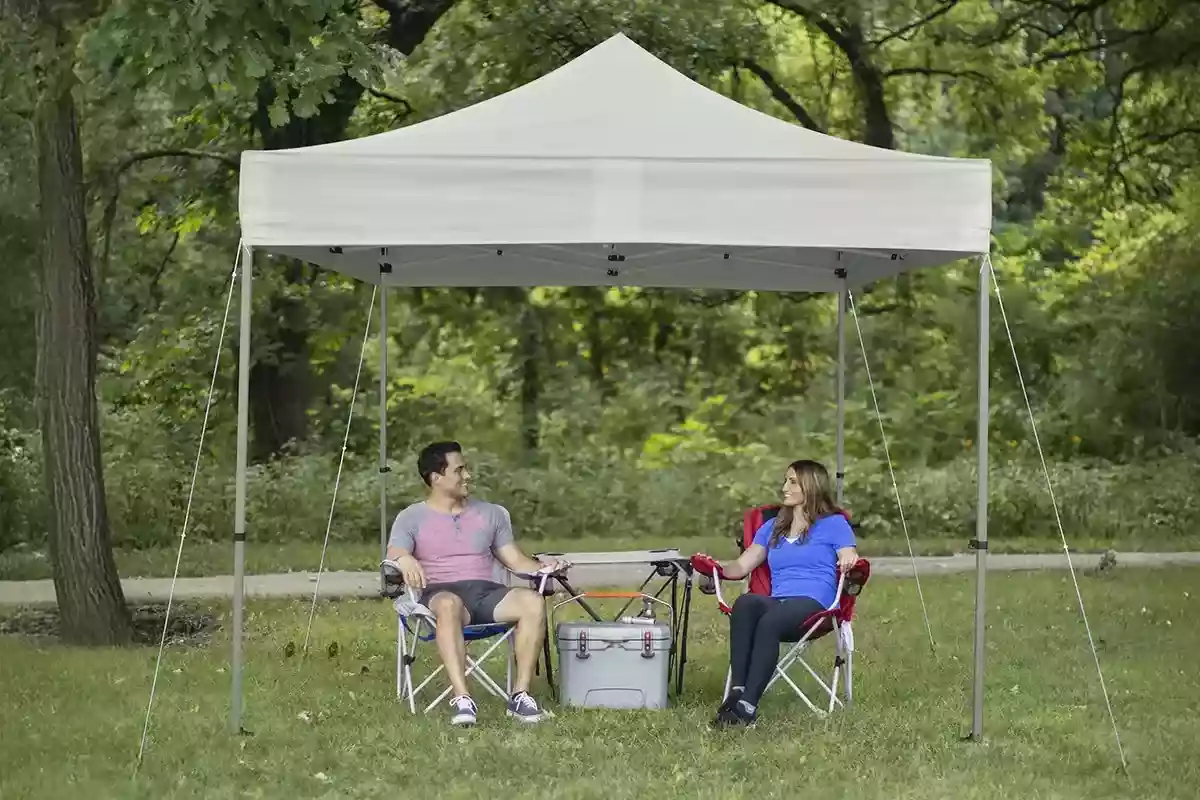
You can use tent stakes and straps to anchor your canopy to the ground. These help distribute wind forces evenly across the structure. Follow these steps to anchor your pop-up tent effectively:
- Use high-quality tent stakes;
- Attach straps or guy ropes to tent legs or frame;
- Insert stakes at a 45-degree angle to the ground;
- Tighten the straps or guy ropes;
- Check for stability.
But remember, this method is only effective on soft ground like grass and sand. If you want to hold on a canopy tent on concrete, you’ll need to use alternative methods such as weight bags or specialized anchors.
Adding Weights to Frame
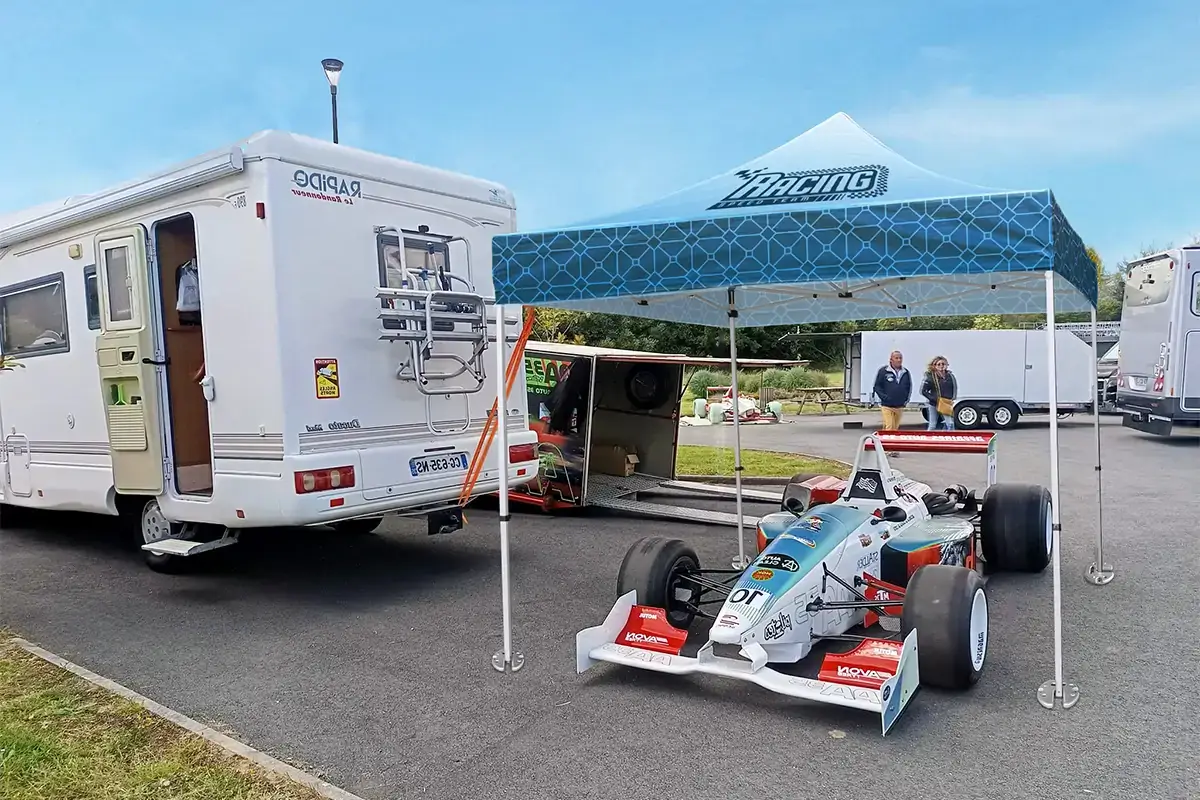
In addition to using tent stakes, adding weights to your pop-up tent frame can provide extra stability. A 30-pound weight for each leg is sufficient to hold down a 10×10 canopy. Just attach the weights to the tent’s foot plate to keep your canopy stable.
Westshade’s heavy-duty weight plates provide a professional, hassle-free solution, while the sandbags and water weights offer flexible anchoring options for different environments.
Choosing the Heavy Duty Pop Up Canopy for Wind Resistance
Whether you’re preparing for a trade show booth or setting up a farmer’s market stall, one thing is certain: you’ll want a pop-up tent that stands firm in any weather.
Wind can catch your canopy unexpectedly, so having a sturdy, reliable setup is the first and the most important step for keeping your space safe and secure. When choosing a tent, consider the following points:
1. Select a Strong Frame
The frame is the backbone of your canopy. So, we recommend our Y8 Super Heavy Duty Aluminum Canopy Tent for those seeking superior wind resistance and overall durability.

Our tent features octagonal aluminum legs for improved stability, with each leg equipped with a square heavy-duty foot pad to keep the tent secure. This frame strikes the perfect balance between strength and lightweight construction, offering exceptional stability without added bulk. Additionally, the aluminum frame is coated to be water and moisture resistant, so we are confident in providing a lifetime warranty on our Y8 tent.
2. Choose Durable Fabric
While ordinary polyester fabrics offer some wind and rain resistance, they are not fully waterproof and have average wind resistance. We recommend using quality weatherproof fabric which consists of the best canopy for wind and rain.
Our 500D polyester fabric with PU coating is a CPAI-84 certified material that resists UV, water, fire, and wind, always providing safe shade. We also offer 600D and 900D options—the thicker the material, the greater the durability and protection.
3. Pay Attention to Stability Features
Although the tents look similar in appearance, the design details of each company’s tents are different. Here are some details that a wind resistant canopy should have:
- Height adjustment
- Reinforced truss bar
- Wide foot-pad
- Windproof roof design
- High-strength connector
- Thickened roof corner
Fortunately, our canopy tents perfectly meet the above design features. If you’re looking for the best heavy duty pop-up canopy, why not take a look at our high-quality offerings?
🎁 Celebrate the festive season with our exclusive Christmas promotion! From December 11th to January 5th, enjoy 20% off sitewide on all regular-priced items. It’s the perfect time to upgrade your outdoor setup, prepare for winter events, or get a head start on next year’s plans.
Use code CM2025 at checkout to unlock your discount.
Don’t miss this once-a-year holiday offer—purchase a high wind rating, durable, and functional outdoor shelter while the savings last.
4. Understand the Wind Rating of Your Canopy
Each tent has a different wind resistance level, so you need to understand its wind rating before purchasing. For example, our aluminum tent can withstand at least 30 MPH of wind, and the Y8 can even reach 50 MPH, while the steel tent has a wind resistance of about 20 MPH. That’s why we recommend using the heavy-duty aluminum frame for better stability in winds.
Conclusion
Understanding the wind rating of your pop-up tent and taking the necessary precautions to secure it can ensure a safe and enjoyable outdoor experience.
Don’t forget to check the weather forecast before your event. If strong winds are expected, please follow our guide to secure your tent for safety. And if your tent is damaged by bad weather, don’t worry, Westshade is always your trustworthy backing. Our excellent warranty is a testament to our confidence in our products. You can learn more details on our website.
